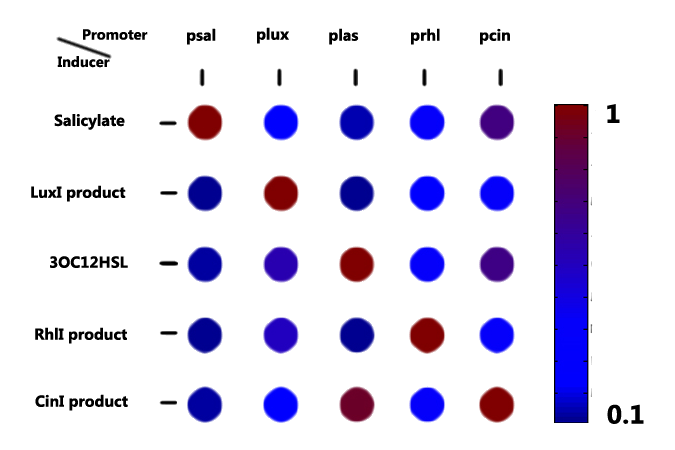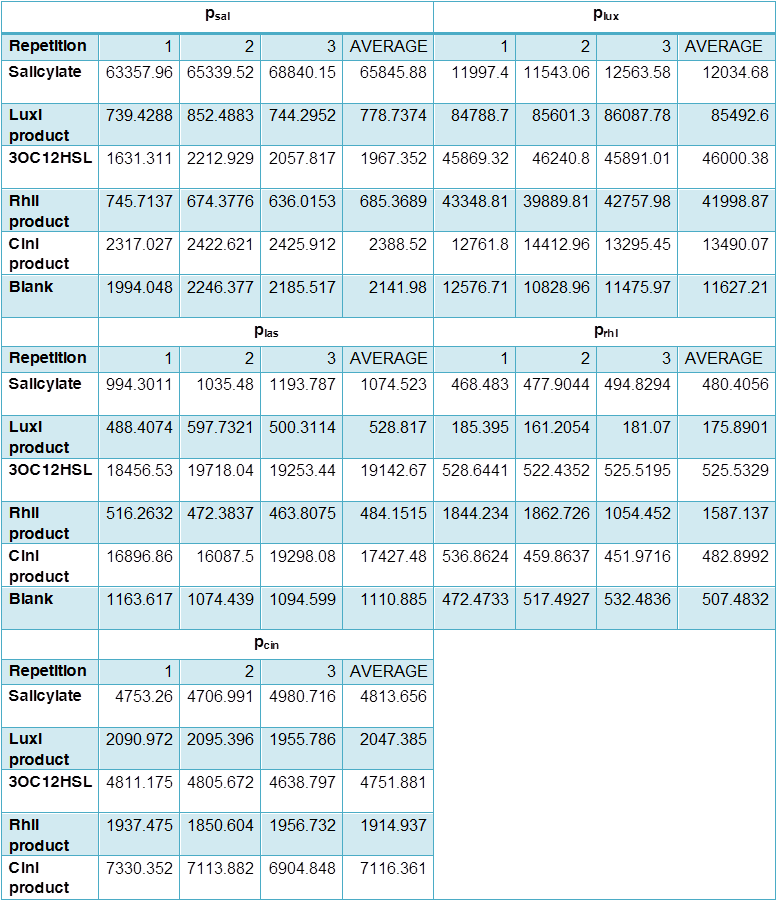Team:Peking S/project/wire/matrix
From 2011.igem.org
Template:Https://2011.igem.org/Team:Peking S/bannerhidden Template:Https://2011.igem.org/Team:Peking S/back2
Template:Https://2011.igem.org/Team:Peking S/bannerhidden

Chemical Wire Toolbox
Introduction|Harvesting ‘Chemical Wires’ From Nature|Synthesizing Quorum Sensing Inverters|Orthogonal Activating Matrix
Orthogonal activating matrix
Aiming at effective and discrete communications in a multicellular genetic network, orthogonality of the 'chemical wires' is essential. Thus we carried out a series of experiments checking the signaling orthogonality of 'chemical wires' in our toolbox.

Figure 1 A graphical representation of the relative activation fold associated with five receiver systems and their corresponding inducer.The concentration of salicylate is 10^-4 mol/L. LuxI product and RhlI product is 10 fold dilution of the supernatant from a overnight culture bearing pT7 controlled luxI generator and ptet controlled rhlI generator, respectively. The concentration of 3-oxododecyl-homoserine lactone(3OC12HSL) is 10^-8 mol/L, and the CinI product is 1:100 dilution of the overnight culture broth.
Table 2 Data of the activating matrix, average fold compared with blank samples calculated
Table 3 Data of the activating matrix, activating fold normalized

 "
"

